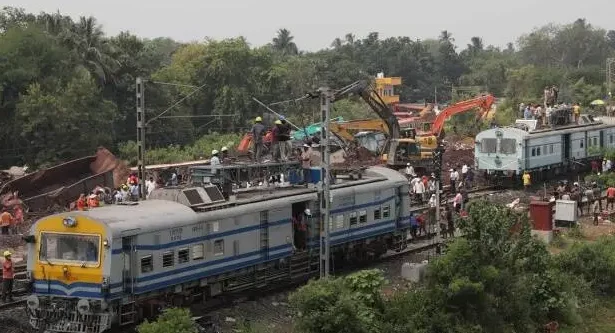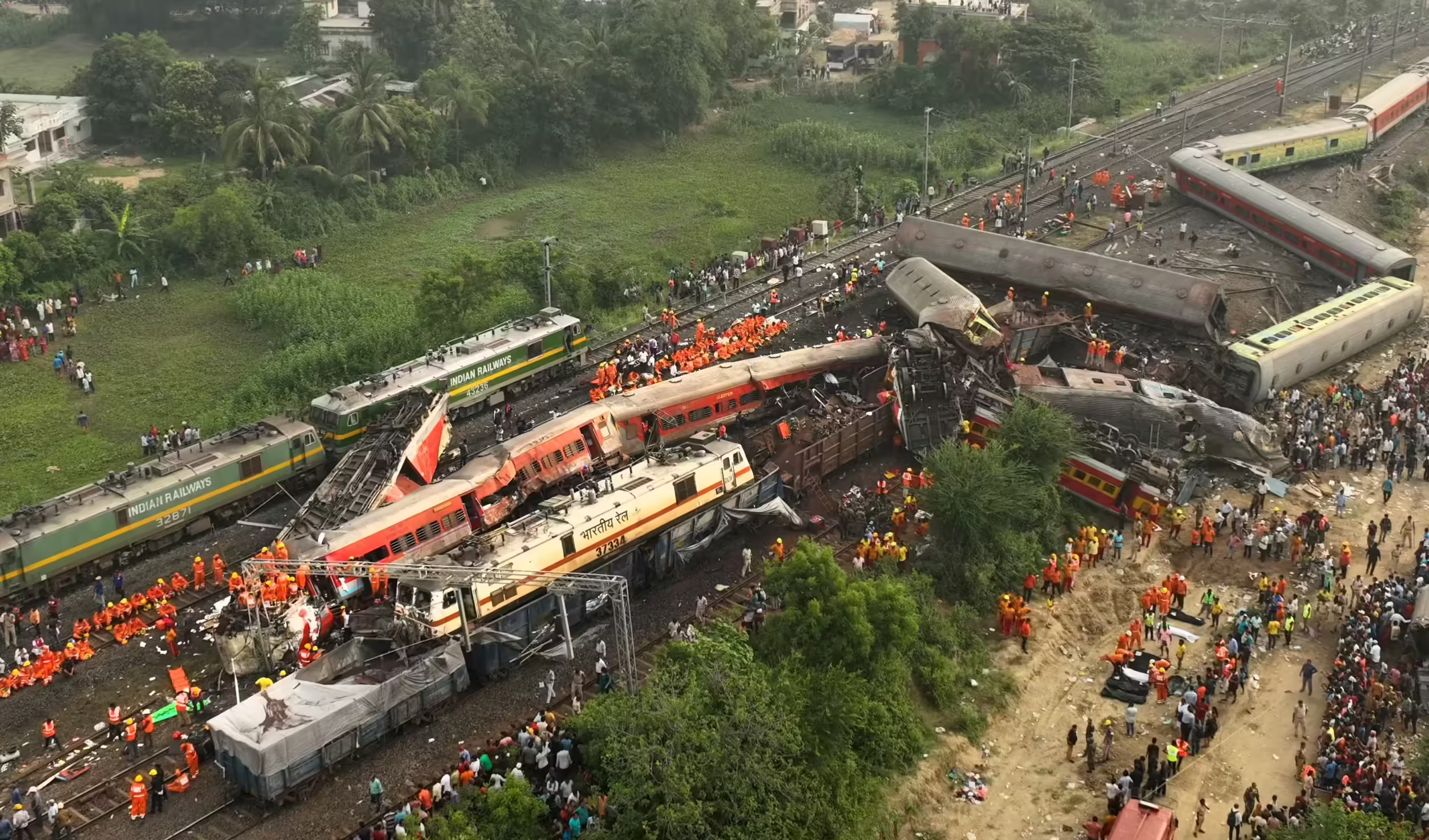One Year Later: The Lingering Trauma of the Balasore Train Disaster
On June 2, 2023, a devastating accident in Balasore, Odisha, became one of India’s deadliest train disasters in decades, claiming the lives of 293 passengers and injuring over 1,100. The collision occurred in the evening, around 7 p.m., when the Coromandel Express struck a stationary freight train laden with iron ore at Bahanaga Bazar station. Derailing at high speed, some of its coaches crashed into the Yeshwantpur-Howrah Express passing on a parallel track. This catastrophe left an indelible mark not only on the railway network but also on the lives of those involved, particularly the loco pilots of the Coromandel Express, who are yet to fully recover.
A Routine Shift Turned Nightmare
Among the affected was Gunanidhi Mohanty, the senior loco pilot on duty with the Coromandel Express, which was traveling from Shalimar (Howrah) to Chennai. With no scheduled stop at Bahanaga Bazar, the Coromandel Express was moving at a speed of 128 km/h when the SMVT Bengaluru-Howrah Express approached on an adjacent track, traveling in the opposite direction. Both trains had received green signals, allowing them to continue along their respective paths. However, due to a malfunction in the signalling system, the Coromandel Express was erroneously diverted from its mainline route onto a parallel loop track, where it collided with a stationary freight train, initiating a tragic chain of events.
Also Read: Trucking Injuries Attorney Houston: Seeking Justice After an Accident
Mohanty’s world turned upside down within seconds. The intense impact derailed 21 coaches of the Coromandel Express, causing several coaches to crash into the Yeshwantpur-Howrah Express on the adjacent track. Severely injured, Mohanty sustained multiple rib fractures and injuries to his legs, which left him bedridden for over three months. Today, while Mohanty has resumed work at the Bhubaneswar station, he manages administrative duties, specifically the rostering of other loco pilots, as he remains unfit to drive. He still faces physical limitations from his injuries, compounded by psychological trauma that, for now, keeps him away from train operations.
Recovery and New Roles for Affected Train Staff
The assistant loco pilot, Hajari Behera, also sustained serious injuries and had to undergo a major hip surgery as a result of the collision. Like Mohanty, Behera has since returned to work, although he, too, is handling roster management rather than driving a train. Assigned to Khurda Road station, Behera faces his own journey of recovery as he struggles with both the psychological impact of the event and physical limitations. Officials from South Eastern Railways (SER) report that while both pilots are back on duty, they continue to process the trauma of that fateful day and are not yet ready to resume their original responsibilities. According to an SER official who was at the accident site, both Mohanty and Behera were found injured and in shock near their seats in the train cabin, and were immediately taken to a local hospital, before being transferred to Bhubaneswar for specialized treatment.
Investigation Reveals Systemic Failures
The Commissioner of Railway Safety (CRS) undertook a comprehensive investigation following the accident, concluding that lapses in the railway’s Signalling and Telecom (S&T) department were primarily responsible for the collision. The CRS report indicated that two critical repair errors—one dating back to 2018 and another conducted just hours before the collision—were left unresolved, leading to the faulty signal that misdirected the Coromandel Express. Investigators stressed that if these issues had been properly addressed, the tragedy may well have been avoided.
The case was then handed over to the Central Bureau of Investigation (CBI) to rule out any foul play, which led to the arrest of three railway staff members. These arrests included senior section engineer (Signals) Arun Kumar Mahanta, section engineer Mohammad Amir Khan, and technician Pappu Kumar. They were charged under sections of the Indian Penal Code (IPC) and the Railways Act, including culpable homicide not amounting to murder and destruction of evidence. Despite filing a chargesheet in September, the CBI has not disclosed further details on the progress of the case.
Indian Railways’ Safety Measures and Reforms
Following the accident, Indian Railways (IR) launched several initiatives to enhance safety across its network. Safety seminars, circulars, and drills were conducted to reinforce safety protocols among railway personnel. In collaboration with the National Disaster Response Force (NDRF), IR organized mock drills across divisions in the South Eastern Railway (SER) network to improve response readiness in the event of future incidents.
Also Read: Premier Houston Semi Truck Accident Attorney
Indian Railways also initiated an independent safety audit of 40 stations, where joint inspections were carried out by zonal officers. These audits focused heavily on re-training staff, especially those in the Signalling and Telecommunications (S&T) department, to ensure compliance with safety regulations. In one-on-one counselling sessions, staff were reminded of their safety obligations.
In Bahanaga Bazar, the station where the collision occurred, IR introduced additional structural improvements, including reinforcement of the foot-over bridge and the installation of street lighting to improve visibility at night. Additionally, plans for constructing more foot-over bridges were approved to ensure safe pedestrian crossing over tracks near the station.
A Long Road to Recovery
The changes implemented by Indian Railways reflect a commitment to preventing similar tragedies in the future. However, for those like Mohanty and Behera, the disaster’s psychological and physical effects have yet to fully subside. Although back at work, both continue to struggle with the trauma of the accident, requiring more time and support to overcome its impact fully. For these train drivers, the past year has been a journey not only of physical recovery but also of emotional endurance, as they grapple with memories that still loom large.
The Legacy of the Balasore Tragedy
The Balasore disaster serves as a sobering reminder of the importance of infrastructure integrity and adherence to rigorous safety protocols in India’s railway network. In a country where rail transport remains one of the most common and crucial modes of travel, incidents like Balasore underscore the imperative of rigorous inspections and reliable signalling systems. As Indian Railways continues its journey toward improved safety, the story of Balasore—and the lives it forever altered—remains a poignant reminder of what’s at stake.
A year later, the accident’s physical aftermath may have been addressed, but for those directly impacted, like Mohanty and Behera, the psychological wounds continue to heal slowly. Their experience serves as a testament to the profound and lasting human cost of such disasters, even as the railways work toward a safer future.


